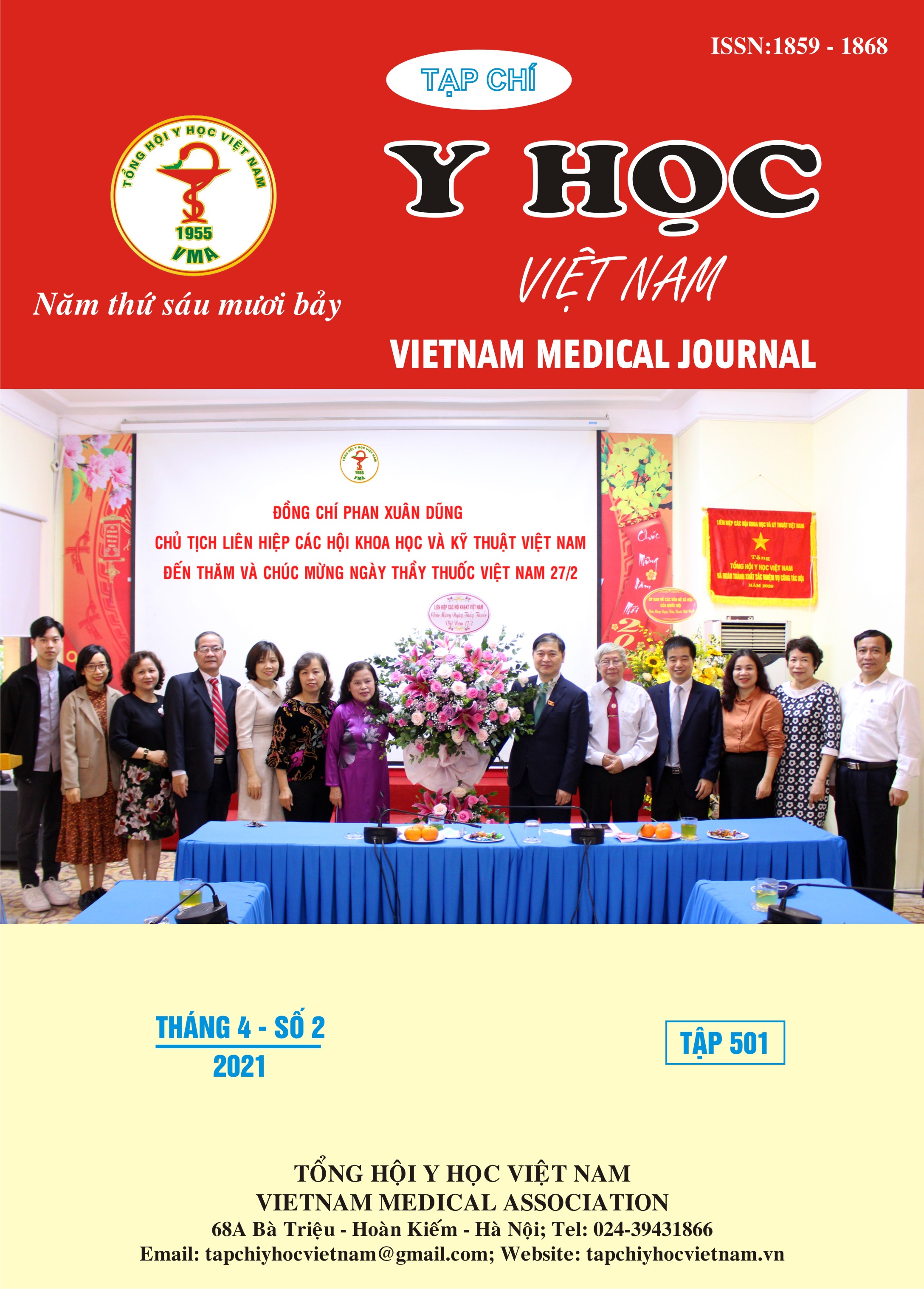SO SÁNH ĐỘ BỀN GÃY CỦA COMPOSITE TĂNG CƯỜNG SỢI EVERX POSTERIOR VỚI COMPOSITE TRÁM MỘT KHỐI
Nội dung chính của bài viết
Tóm tắt
Mục tiêu: So sánh độ bền gãy của composite tăng cường sợi everX Posterior và các composite trám một khối SDR, Tetric EvoCeram Bulk Fill, SonicFill. Vật liệu và phương pháp: Nghiên cứu in vitro trên 40 răng cối lớn thứ ba hàm dưới, chia thành 4 nhóm như sau: nhóm 1 (10 răng) trám composite everX posterior, nhóm 2 (10 răng) trám composite SDR, nhóm 3 (10 răng) trám composite SonicFill, nhóm 4 (10 răng) trám composite Tetric EvoCeram Bulk Fill. Kết quả: Độ bền gãy của các composite everX Posterior, SDR, SonicFill, Tetric EvoCeram Bulk Fill lần lượt là 2533,5 ± 438,4 (N) ; 2495,7 ± 747,7 (N) ; 2344,0 ± 532,6 (N) ; 2222,4 ± 387,8 (N). Sự khác biệt về độ bền gãy giữa các nhóm thử nghiệm không có ý nghĩa thống kê.Composite tăng cường sợi everX Posterior có tỉ lệ kiểu gãy thuận lợi cao nhất (40 %), kế đến là composite kế đến là SonicFill (20 %), SDR và Tetric EvoCeram Bulk Fill có tỉ lệ tương đương nhau (10 %). Sự khác biệt về kiểu gãy giữa các nhóm thử nghiệm không có ý nghĩa thống kê. Kết luận: Độ bền gãy và kiểu gãy giữa composite tăng cường sợi everX Posterior và các composite trám một khối SDR, Tetric EvoCeram Bulk Fill, SonicFill không có khác biệt.
Chi tiết bài viết
Từ khóa
Fiber composite, bulk composite, fracture toughness
Tài liệu tham khảo
2. Bonilla E D, Yasharb M, Caputo A A (2003), “Fracture toughness of nine flowable resin composites”, The journal of prosthetic dentistry, 89, (3), pp.261-267.
3. Frater M, Forster A, Kereszturi M, Braunitzer G, Nagy K (2014), ” In vitro fracture resistance of molar teeth restored with a short fibre-reinforced composite material”, Journal of dentistry, 42 (9), pp.1143-1150.
4. Fronza BM, Rueggeberg FA, Braga RR, Mogilevych B, Soares LES, Martin AA, Ambrosano Glaucia, Giannini M (2015), “Monomer conversion, microhardness, internal marginal adaptation, and shrinkage stress of bulk-fill resin composite”, Dental Material, 31 (12), pp. 1542-1551.
5. Garoushi S, Sailynoja E, Vallittu PK, Lassila L (2013), ”Physical properties and depth of cure of a new short fiber reinforced composite”, Dental Materials, 29 (8), pp.835-841.
6. Garoushi S, Vallittu PK, Lassila LVJ (2011), ”Fracture toughness, compressive strength and load-bearing capacity of short glass fiber-reinforced composite resin”, The Chinese Journal of dental research, 14 (1), pp.15-19.
7. Tezvergil A, Lassila LVJ, Vallittu PK (2005), “The shear bond strength of bidirectional and random-oriented fiber-reinforced composite to tooth structure”, Journal of Dentistry, 33 (6), pp.509-516.


